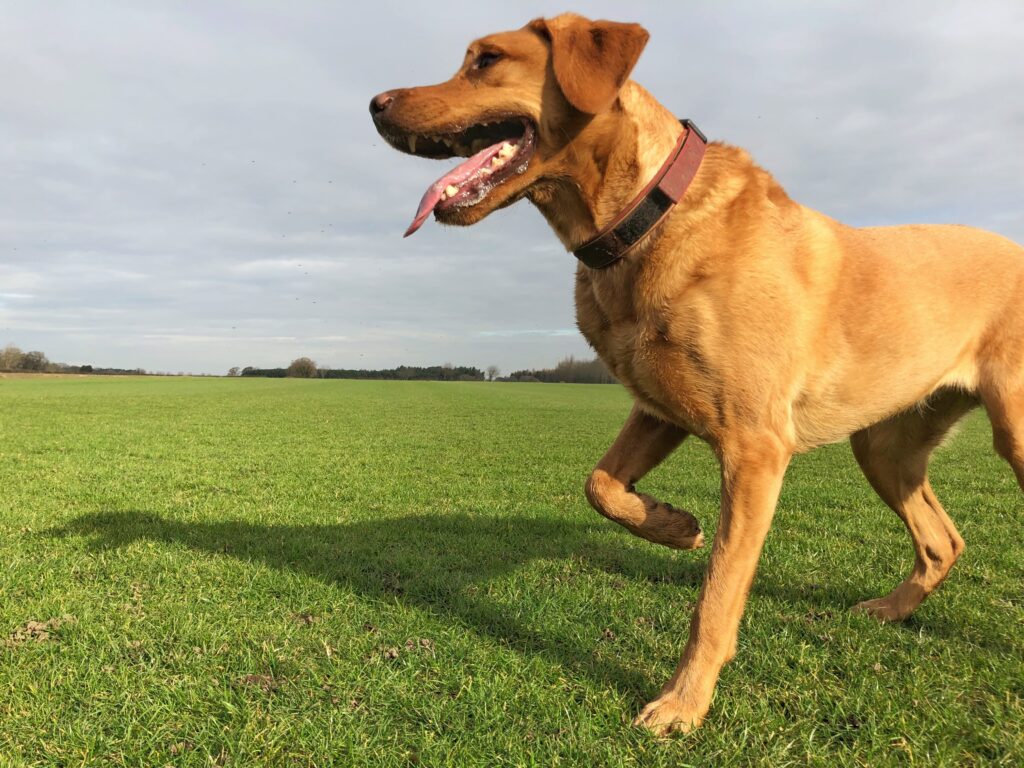If you notice your dog limping on its front leg, you might be wondering if it’s serious enough to see a vet. Limping can be a sign of something minor, like a small cut or bruise, or it could be indicative of a more serious condition. In this blog, we’ll discuss common reasons why dogs limp, how to spot urgency in their condition, and why a vet visit is often a good idea! If you’re concerned, call Triangle Animal Clinic at (936) 756-3318 or schedule an appointment to see that your dog gets the right care.
What Causes Limping in Dogs?
Limping in dogs can arise from various conditions—some needing immediate attention, while others might resolve with rest. Understanding the common causes can help you better gauge the severity of the situation.
- Injuries: Sprains, fractures, or injuries from falls or accidents can make your dog limp. These might not always be visible.
- Joint problems: Conditions like arthritis or hip dysplasia can cause pain and limping, especially in older dogs.
- Paw issues: Thorns, stones, or cuts on the pads can make walking painful. Check your dog’s paws regularly for any signs of injury.
- Infections: Infections in the paw or leg can also lead to limping. These might be accompanied by swelling, redness, and warmth.
Signs That It’s Time to Visit the Vet
Sometimes it’s clear that your dog needs to see a vet, but other times it might be harder to tell. Here are some signs that it’s time to make that call:
- Persistent limping: If your dog continues to limp for more than a day, it’s time to consult a vet.
- Severe pain: If your dog whines, avoids putting weight on the leg, or cannot move normally, they need immediate attention.
- Visible deformities: If there are obvious signs of a broken bone or dislocation, such as a limb facing the wrong way, see a vet immediately.
- Swelling or warmth: These can be signs of infection or inflammation.
If you’re seeing any of these symptoms, contact Triangle Animal Clinic at (936) 756-3318. Early intervention can prevent more serious and lasting complications and help your dog recover faster.
How Vets Diagnose and Treat Limping
When you bring your dog to the vet for limping, they will perform a thorough examination to determine the cause. This might include:
- Physical examination: Checking for pain points, swelling, and the range of motion in the leg.
- X-rays: To look for fractures or issues in the joints.
- Blood tests: These can help identify infections or diseases that could be causing the limp.
Treatment will depend on the diagnosis but might include medications for pain and inflammation, rest, or in some cases, surgery. Our team at Triangle Animal Clinic is equipped to provide the care your dog needs for a swift recovery.
Preventing Future Limping Issues
While not all limping can be prevented, there are steps you can take to minimize risks for your pet:
- Regular vet visits: Routine check-ups can catch early signs of conditions like arthritis, making them easier to manage.
- Proper paw care: Keep your dog’s nails trimmed and their paws clear of debris to prevent injuries.
- Weight management: Keeping your dog at a healthy weight can reduce the stress on their joints and bones.
Be Proactive and Contact Us Today
By understanding why your dog is limping and seeking timely veterinary care, you can ensure they remain active and happy. If you notice any issues or if your dog’s limping worsens, do not wait to seek veterinary attention. Your prompt response can make a big difference in your dog’s health and comfort.
If you have concerns about your dog’s limping or want to discuss preventive measures, call Triangle Animal Clinic in Conroe, TX at (936) 756-3318. Our team is here to support your dog’s health and mobility with expert care.







